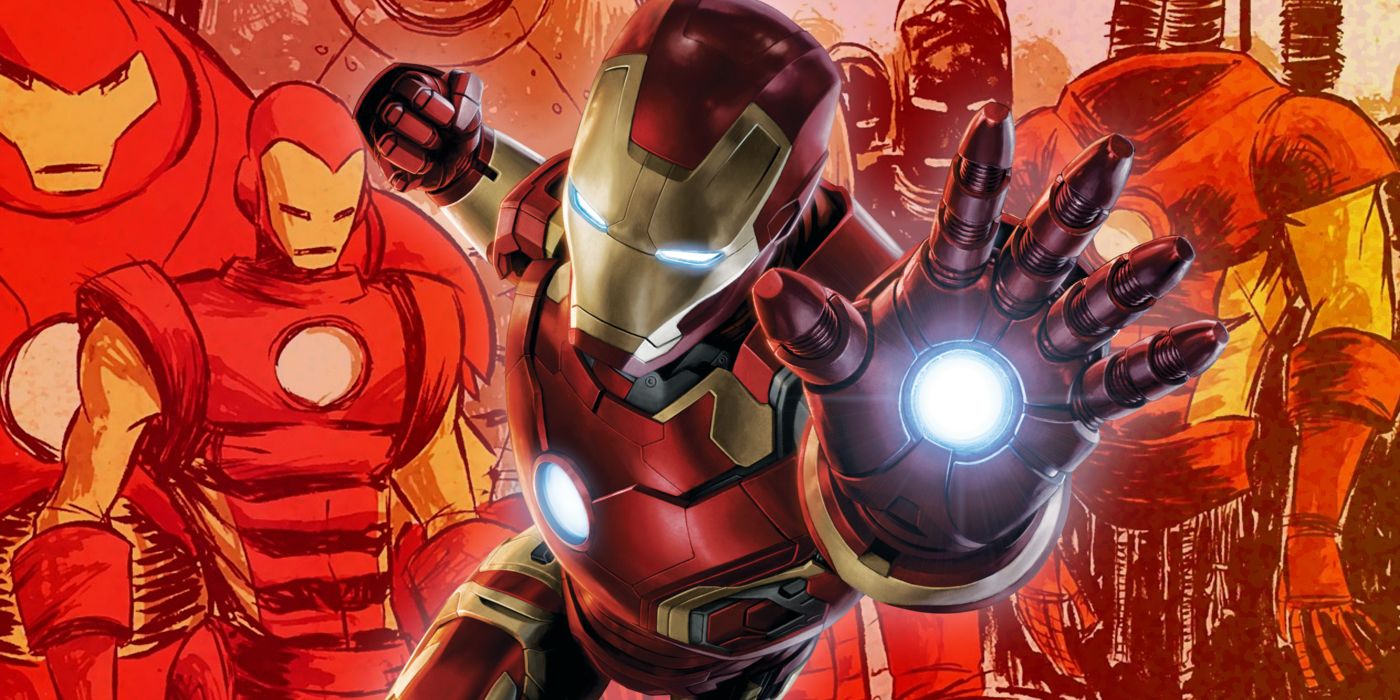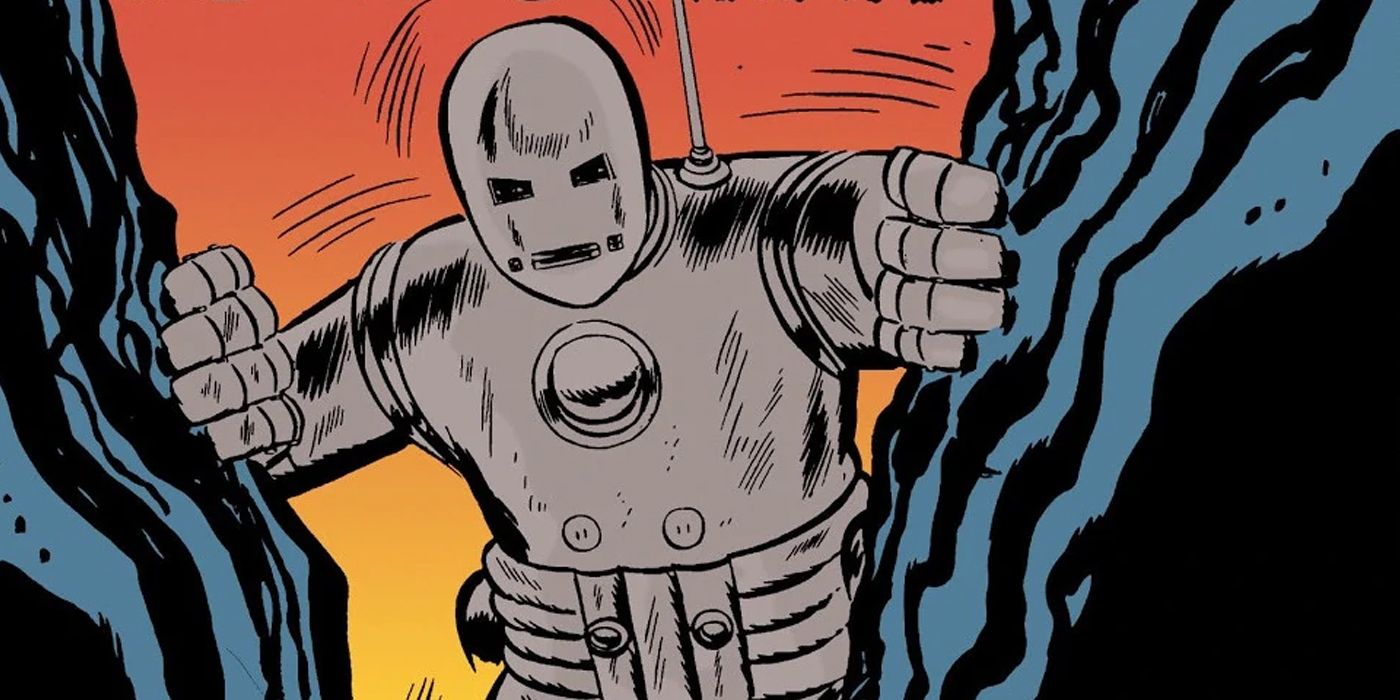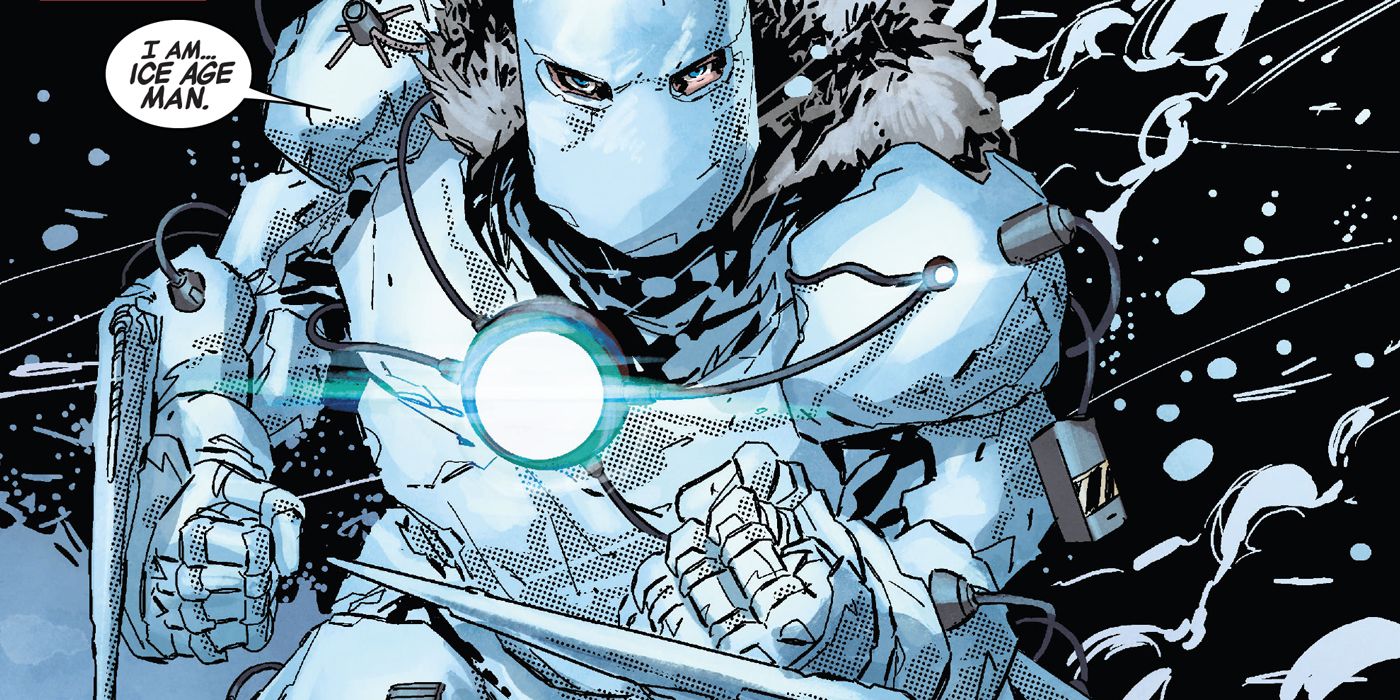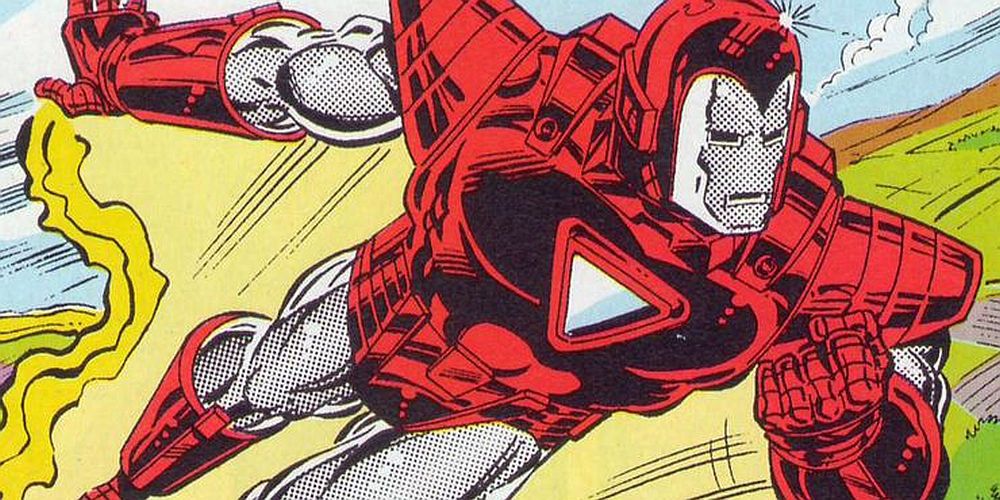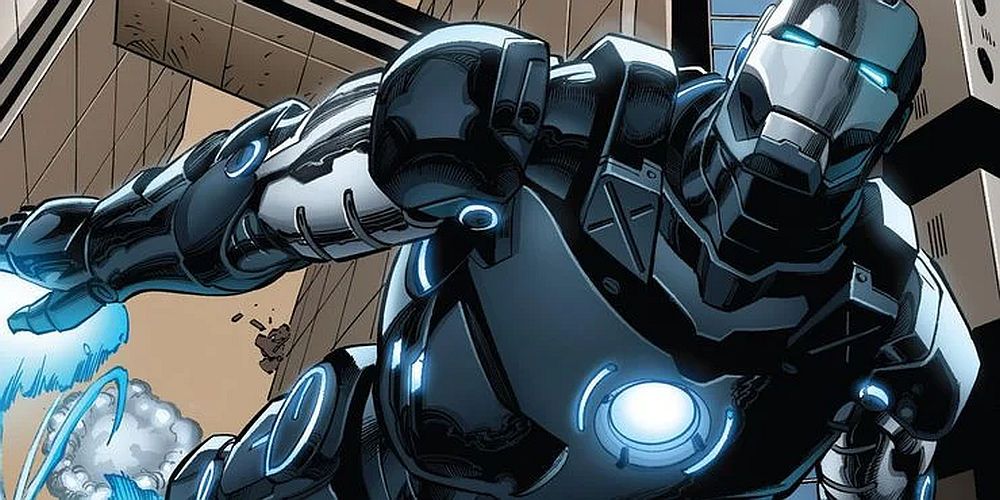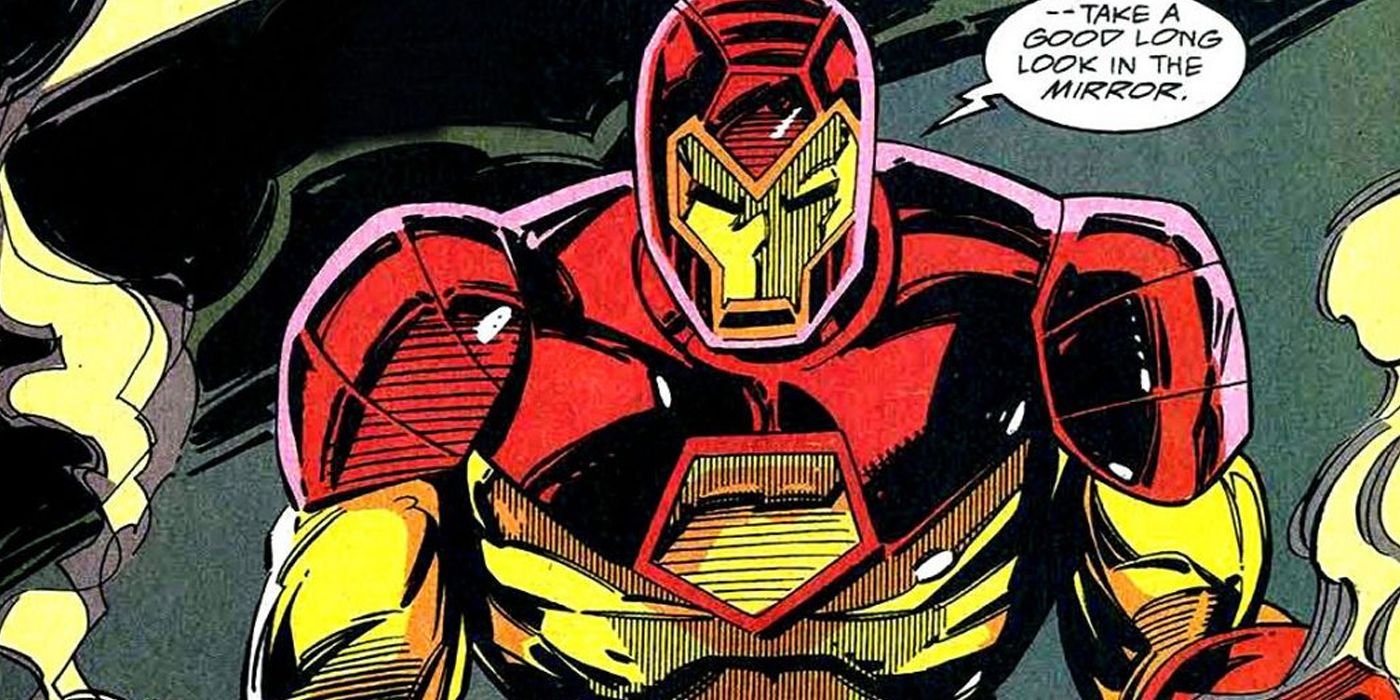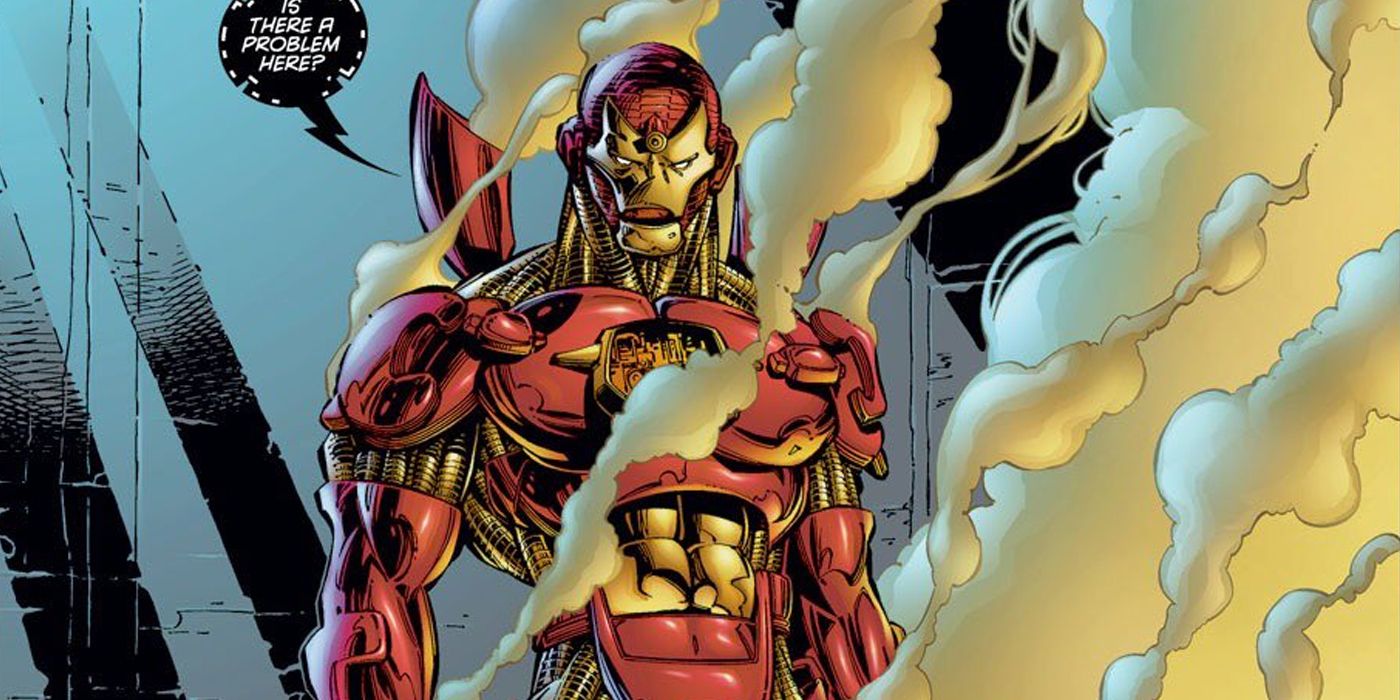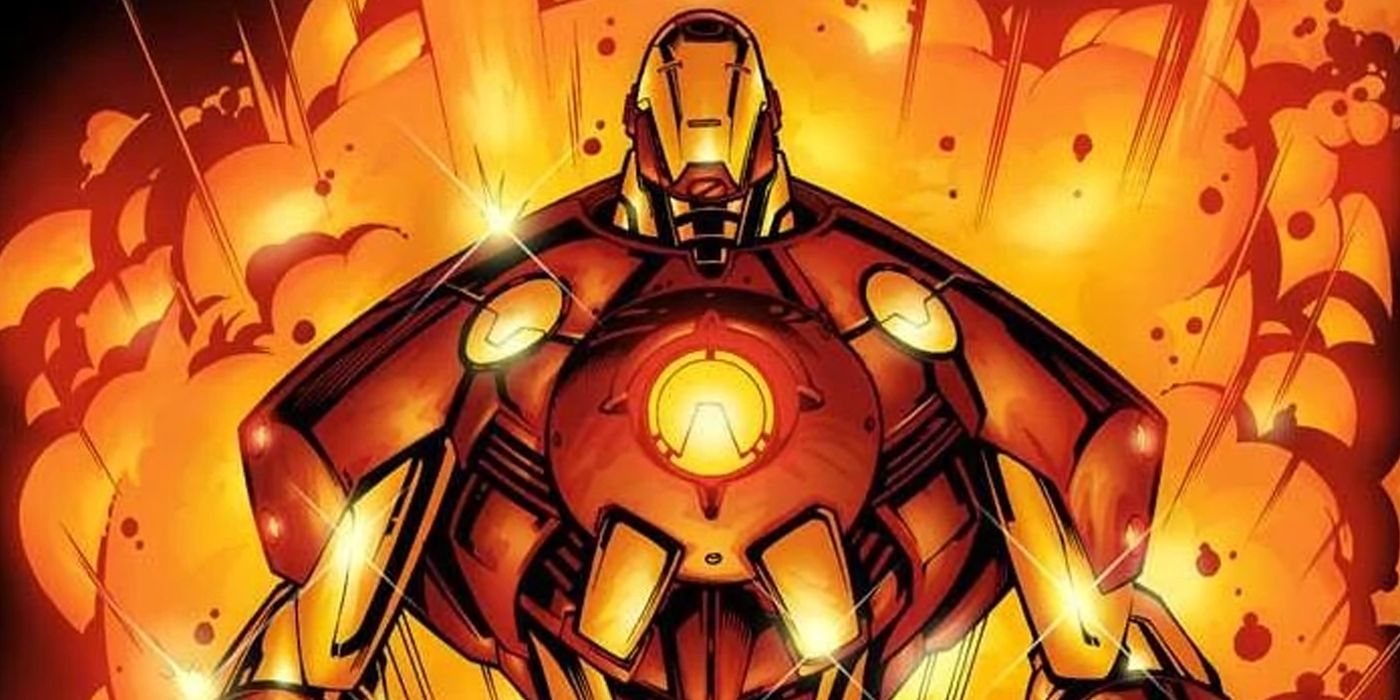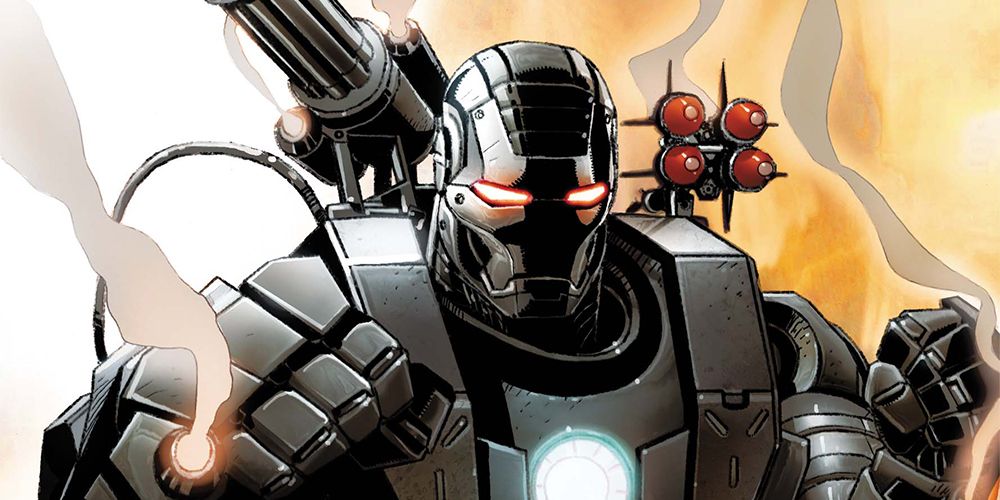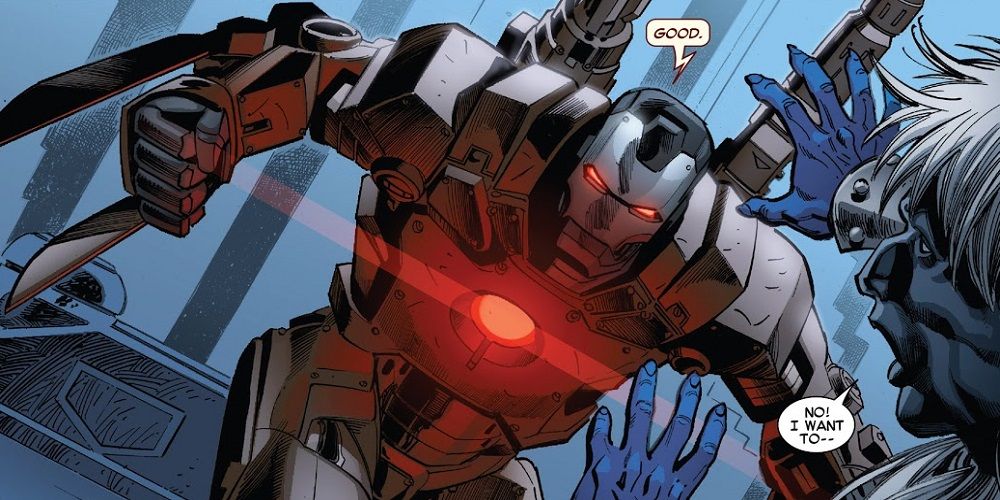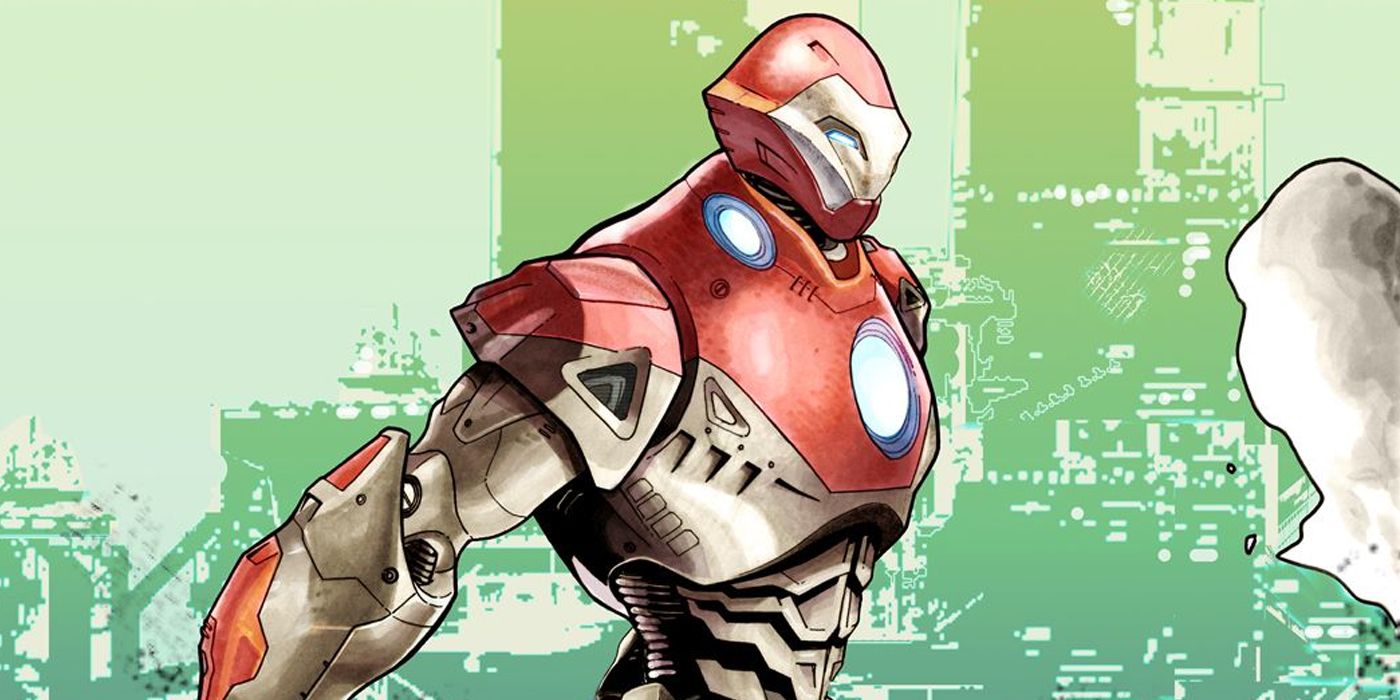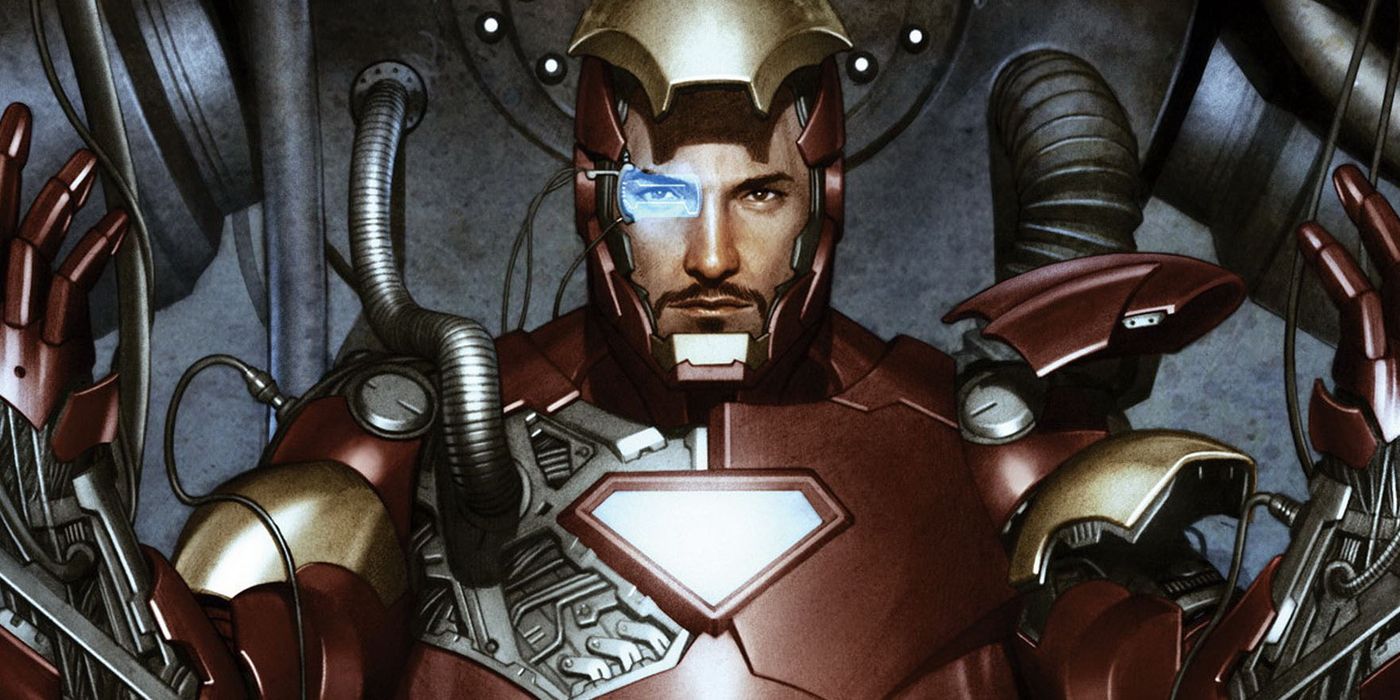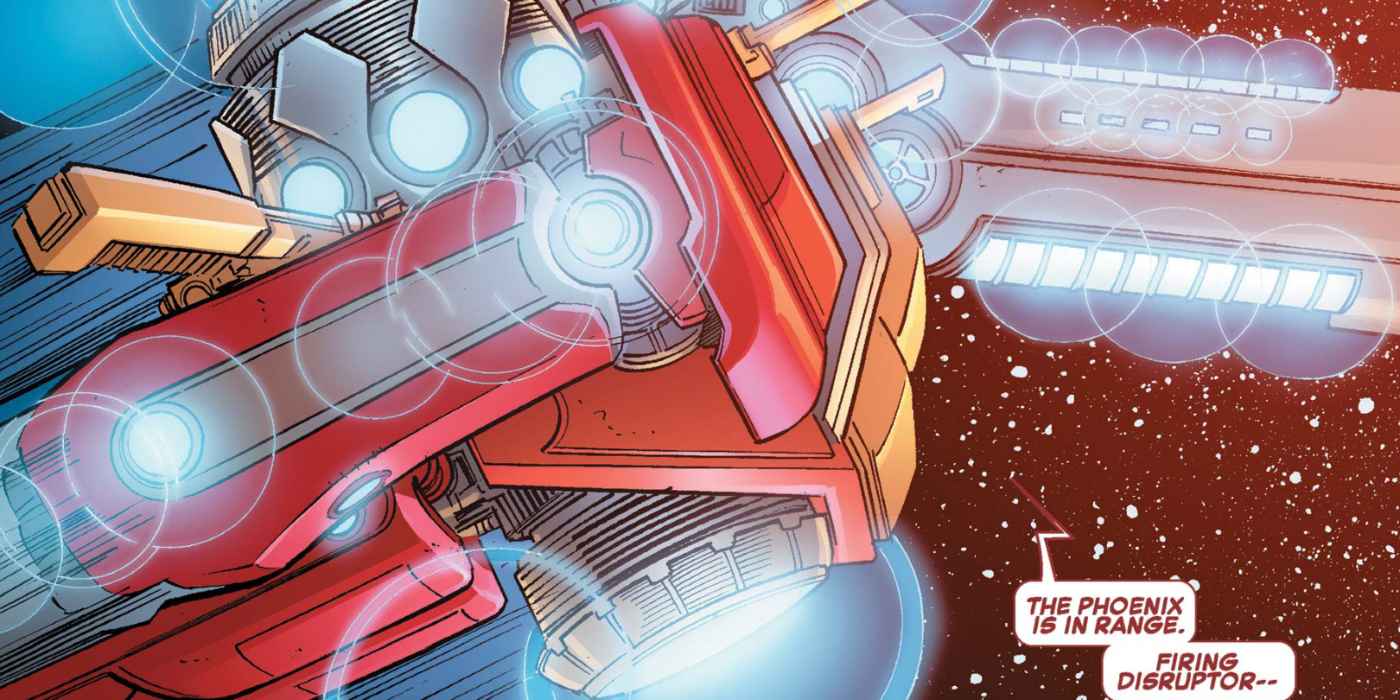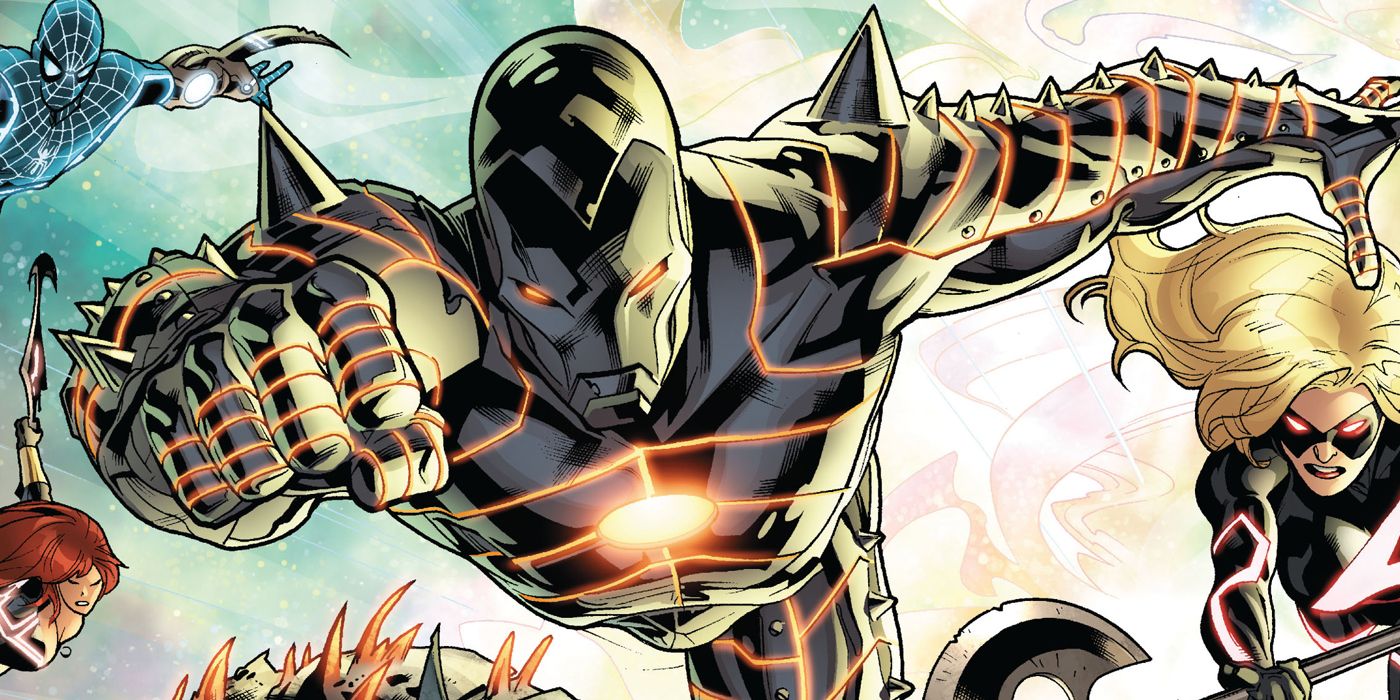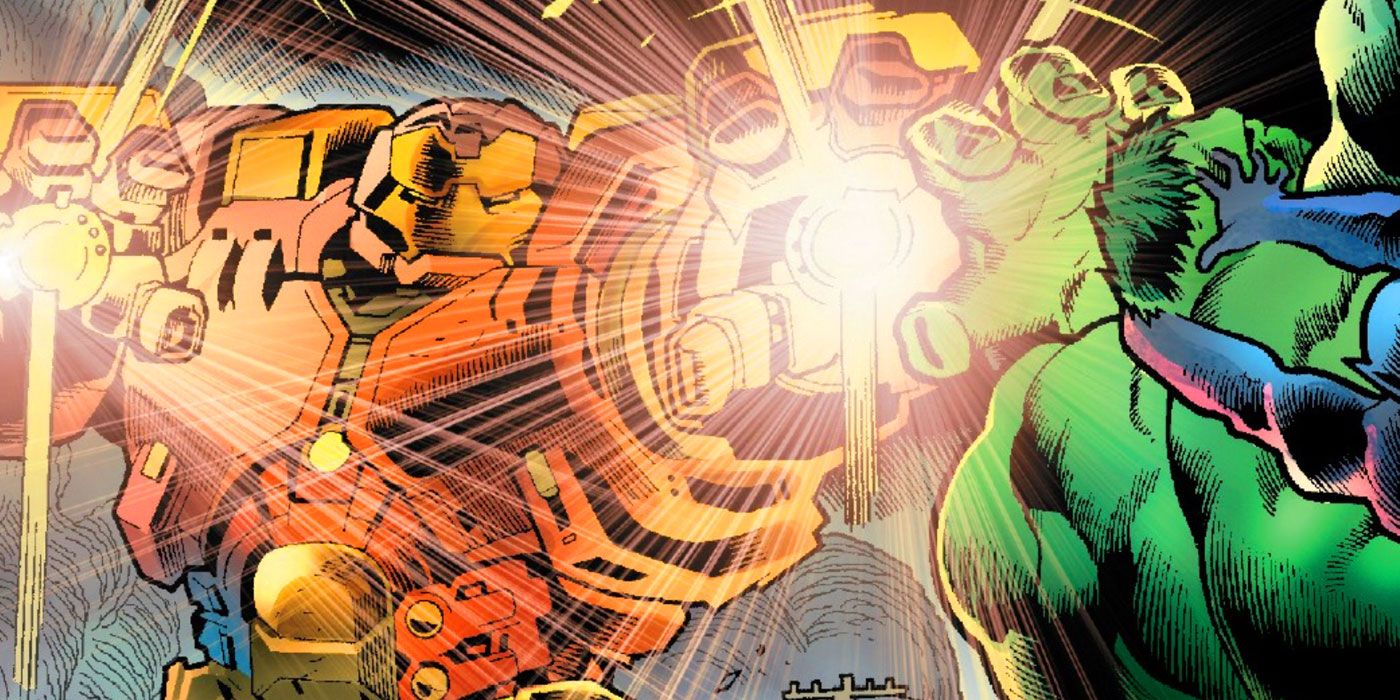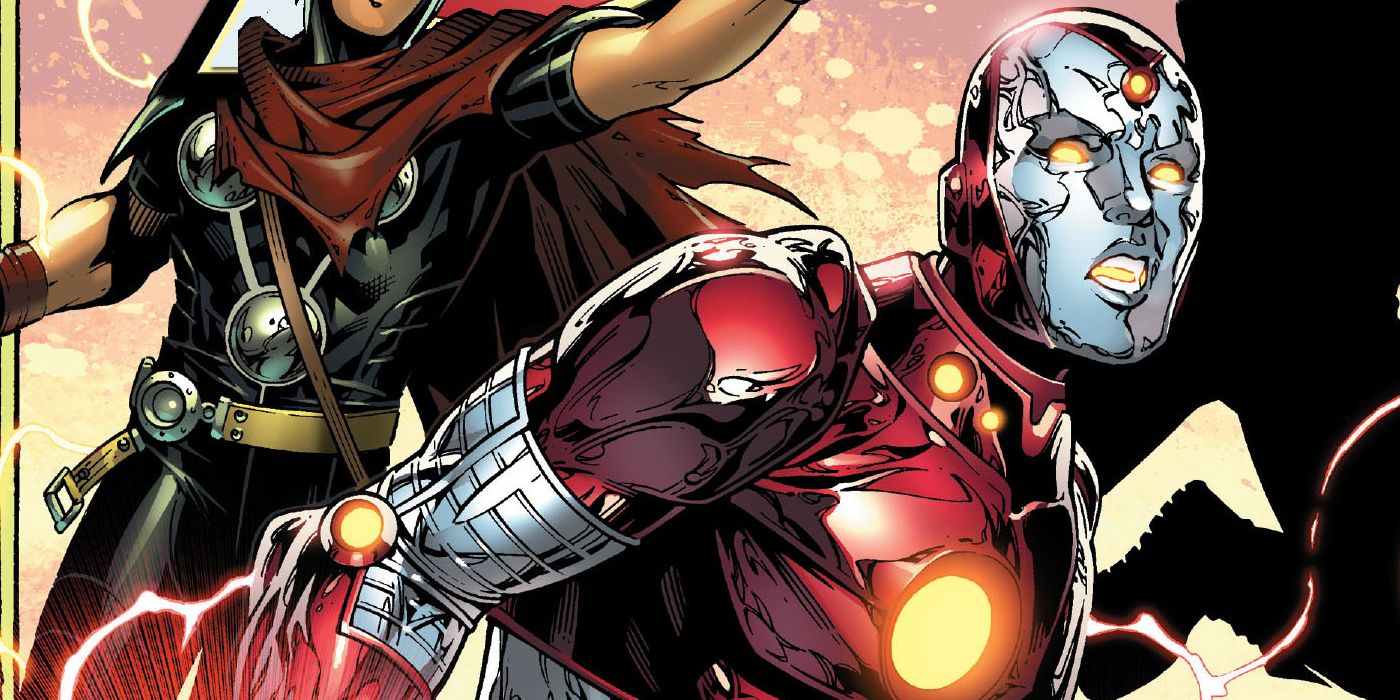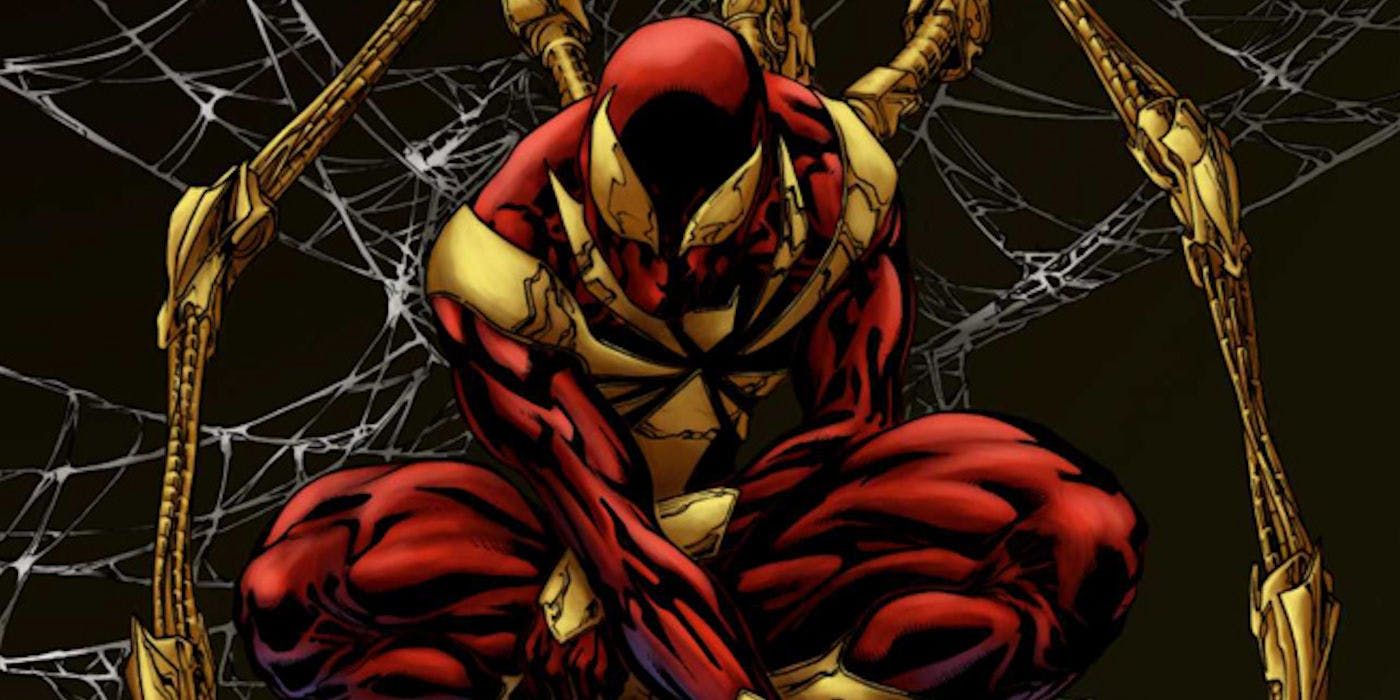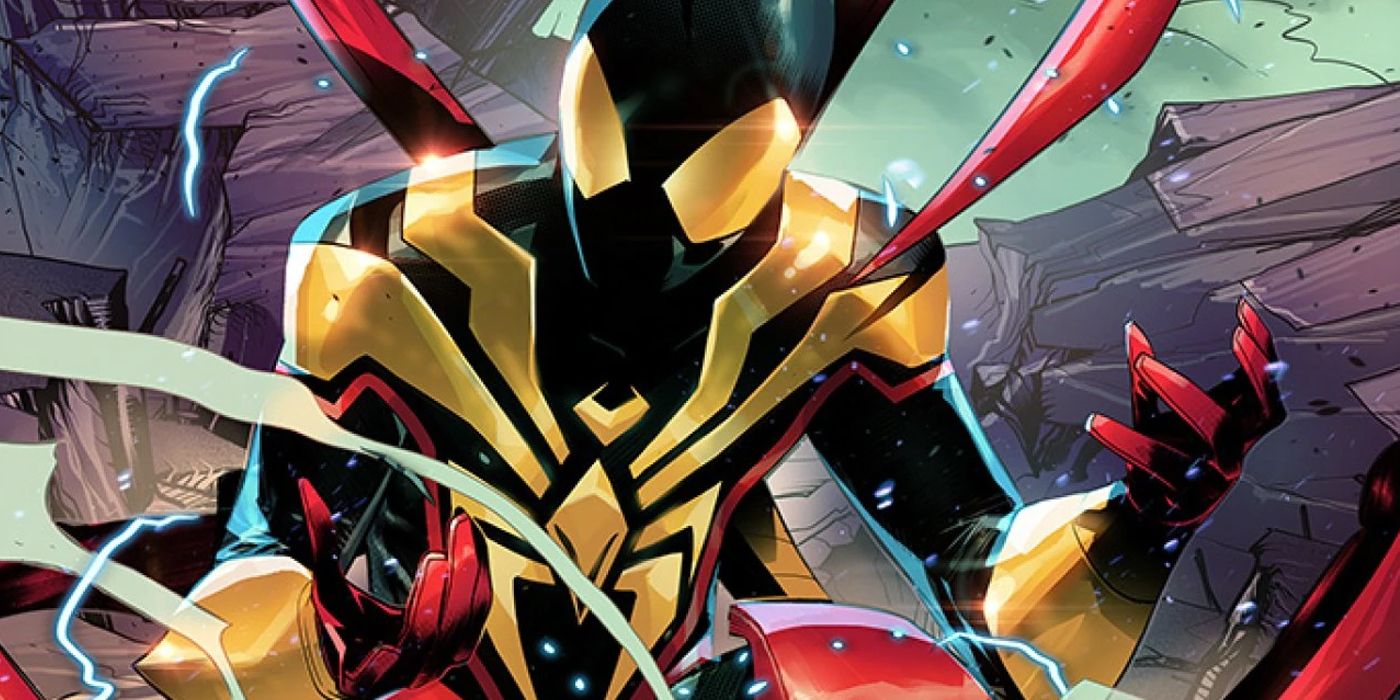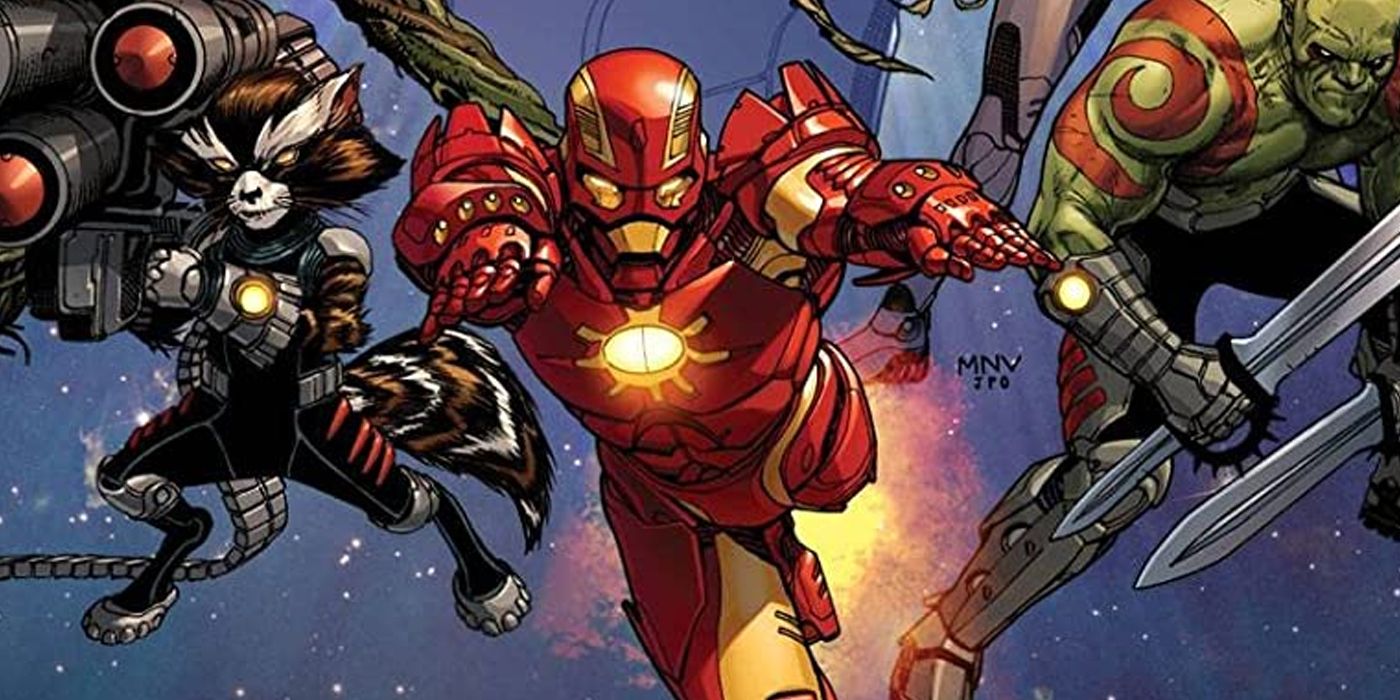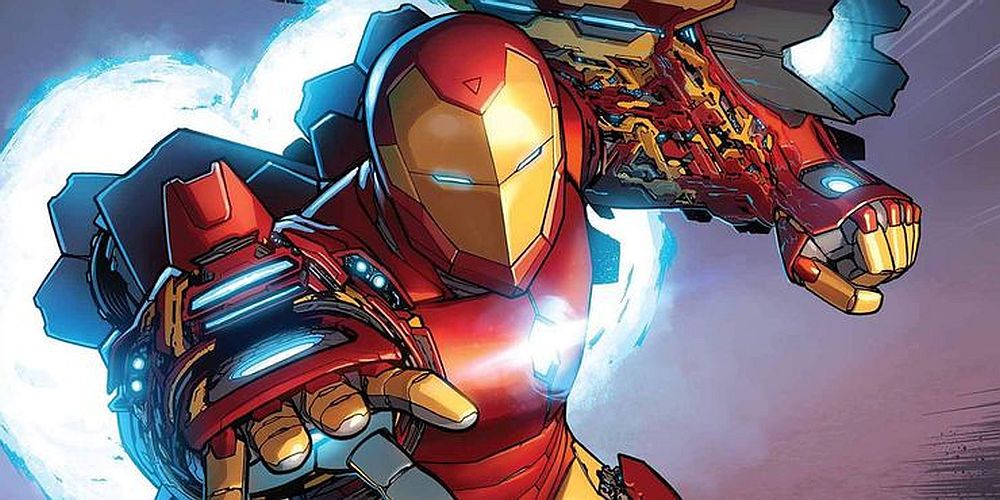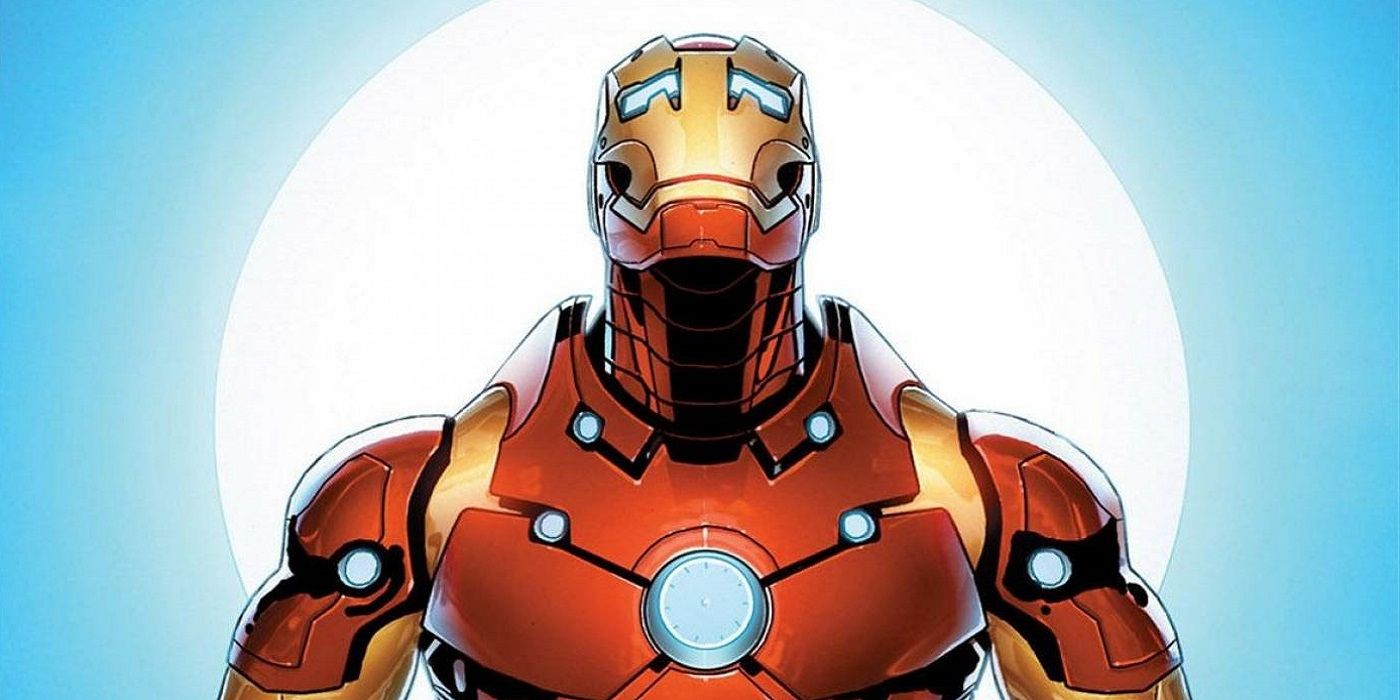Summary
- Iron Man's armor is constantly upgraded and improved to stay ahead of the curve, reflecting Tony Stark's passion for technology and his love for tinkering.
- The Mark I armor was created by Stark to save his own life while he was held captive by terrorists, and its functional design reflects his desperation and determination.
- Other notable Iron Man suits include the Model 66 "Ice Armor," Model 8 "Silver Centurion Armor," and Model 43 "Stealth Armor," each with their own unique features and purposes.
Iron Man has been around for years, so it’s no surprise Tony Stark has continually come up with new designs for armor. As technology continues to advance, Iron Man continues to upgrade and improve his armor to stay ahead of the curve.
A true tinkerer at heart, Tony’s passion for technology has led him to create suits of armor for every occasion. He has armor that enables him to battle space deities and armor infused with mystical protection against supernatural threats. Stark's best Iron Man suits are all top-of-the-line, and he knows it.
Updated on July 22, 2023, by Scoot Allan: Tony Stark has kept himself alive and the world safe over the years by continually improving Iron Man's strongest suit. He even outfitted Miles Morales in a brand new suit of armor during the "Carnage Reigns" crossover from the Summer of Symbiotes to protect him from the serial killing symbiote. He's even created Celestial-sized armor or been enhanced by the Power Cosmic to further increase his armory of Iron Man's most powerful suits
30 Mark I Armor
First Appearance: Tales Of Suspense #39 (December 1962) by Stan Lee, Larry Lieber, Don Heck, Stan Goldberg, and Art Simek
Tony Stark didn't create his first armored outfit to launch him into a superhero career or to bring him additional fame and fortune. Stark designed his first suit of armor to save his life. Held captive by terrorists, an injured Tony Stark scrapped together an impressive machine that acted as both a pacemaker and his vessel of escape.
Key Features:
- Jets for Flight
- Mini Flamethrower
- Collapsed into a Suitcase
- "Monobeam" Flashlight/Heat Ray
- Bullet, Heat, Cold, Energy, and Acid Resistant
The Mark I armor wasn’t slick or stylish. It was a functional machine meant to give Stark the edge he needed to escape. The energy coursing through its circuits wasn’t the only power the suit received. Tony’s desperation and determination instilled in him a new sense of purpose, and forever changed his outlook on life.
29 Model 66 "Ice Armor"
First Appearance: Avengers #31 (February 2020) by Jason Aaron, Gerardo Zaffino, Geraldo Borges, Szymon Kudranski, Jan Bazaldua, Mattia De Iulis, Rachelle Rosenberg, and Joe Caramagna
Mephisto sent Iron Man back in time to a cave in 1,000,000 B.C. Trapped in a vicious ice storm and stuck with malfunctioning armor, Stark adapted in order to survive, bringing him back to his roots. He cannibalized his modern armor for circuitry, and Vibranium batteries acted as a power source.
Key Features:
- Repulsor Blasts
- Icicle Wrist-Canon
- Powered by Vibranium
Stark used any resource he had available in the past to create a powerful new suit of armor. It officially became known as Model 66, although Stark referred to himself as the Ice Age Man. The Ice Armor was fairly low-tech but still had icicle-launching capabilities and repulsor blasts. The Ice Armor held up against Mephisto, but Stark's final blow to the Time Stone destroyed the armor.
28 Model 8 "Silver Centurion Armor"
First Appearance: Iron Man #200 (August 1985) by Denny O'Neil, Mark Bright, Ian Akin, Brian Garvey, Bob Sharen, and Rick Parker
Known as the Silver Centurion, the Model 8 became one of Tony Stark’s most powerful models. Tony invented the Silver Centurion armor after Obadiah Stane injured James Rhodes, kidnapped his colleagues, and nearly destroyed Stark Industries.
Key Features:
- Enhanced Repulsors and Uni-Beam
- "Chameleon Effect" Hologram for Camoflouging
- Disruptor Field
- Tractor Beam
The Silver Centurion featured cool Stark items that later appeared in the MCU, like an enhanced Uni-Beam, force field, and a stealth mode that made him invisible to other technology. Iron Man used the Silver Centurion armor for a few years before returning to his traditional red and gold color scheme.
27 Model 43 "Stealth Armor"
First Appearance: Iron Man #3 (December 2012) by Kieron Gillen, Greg Land, Jay Leisten, Guru-eFX, and Joe Caramagna
Tony Stark built the first version of his stealth armor, the Model 7, so he could infiltrate the heavily guarded Heaven's Hand fortress. One of Stark's most sophisticated versions of the Stealth armor was Model 43, created to retrieve an Extremis sample from a secure compound.
Key Features:
- Light-Bending Technology
- Hologram Technology
- Silent Weapons
- Shielding
Besides the Model 43’s cloaking abilities, this armor featured a reflective surface and had holographic abilities. The Model 43’s weapons were primarily non-lethal, designed for covert missions rather than for serious combat.
26 Model 13 "Modular Armor"
First Appearance: Iron Man #300 (November 1993) by Len Kaminski, Kevin Hopgood, Steve Mitchell, Ariane Lenshoek, and Ken Lopez
Most of Iron Man's earliest armors were bulky and composed of large armor pieces that required additional suit-up technology. Stark created his modular armor in the '90s. This updated his look, modernized his technology, and produced a better suit.
Key Features:
- Module Plug-In
- EM Field Generator
- Microsurgery Equipment
- Gravimetric Field Generator
- Synchronized With Hulkbuster Armor
Iron Man's modular armor consisted of many components, which made it easier to store and assemble. The modular armor featured several additional module plugins that could join the armor at any time. He even designed a new Hulkbuster suit that worked with his modular armor.
25 Model CE1 "Advanced Prometheum Armor"
First Appearance: Iron Man #1 (September 1996) by Scott Lobdell, Jim Lee, Whilce Portacio, Scott Williams, John Dickenson, Joe Chiodo, Martin Jimenez, Wildstorm FX, Richard Starkings, and David Lanphear
When Onslaught attacked the Marvel universe, Iron Man sacrificed himself along with the Avengers and Fantastic Four to stop the psionic villain. Thankfully, the young Franklin Richards saved the heroes, unknowingly creating a pocket universe where he kept the heroes safe. Marvel's heroes received a fresh and modernized new start during the Heroes Reborn event.
Key Features:
- Repulsors
- Force Fields
- Uni-Beam
- Technology Enhancements
Tony Stark created a powerful suit of armor known as the Prometheum armor he had to wear after he nearly died during an attack. The Prometheum armor featured the usual bells and whistles like repulsors but with a modern touch. The armor was so powerful its force fields could stop punches from the Hulk.
24 Model 19 "S.K.I.N. Armor"
First Appearance: Iron Man #42 (May 2001) by Frank Tieri, Keron Grant, Rob Stull, Karl Story, Rich Perrotta, Edgar Tadeo, and Dave Sharpe
Iron Man's armor has always been heavy-duty and durable, although Stark created a more lightweight version known as the S.K.I.N. armor. After his previous armor gained sentience, Iron Man attempted to design a streamlined but still protective suit of armor.
Key Features:
- Light-Weight
- Nearly Indestructible
- Could Absorb and Redirect Energy
- Energy Blade
- Smart Bombs
Stark designed a Synthetic Kinetic Interfacing Nanofluid that flowed out of his chest piece to form the golden metallic armor of his suit. It was lightweight and flexible but could stand up to incredible amounts of damage. Ultron found a way to corrupt the S.K.I.N. suit to use it for himself, so Stark destroyed his own design.
23 Model 11 "War Machine Armor"
First Appearance: Iron Man #281 (April 1992) by Len Kaminski, Kevin Hopgood, Bob Wiacek, Mike Rockwitz, and Michael Heisler
The Iron Man Model 11 armor became one of the rare suits Tony Stark designed but didn’t wear on missions himself. Instead, he gave the Model 11 armor to his pal James “Rhodey” Rhodes. Rhodey would eventually join Iron Man in combat, adopting the name War Machine.
Key Features:
- Laser Blade
- Gatling Gun
- Wrist-Mounted Flamethrower
- 14 Munitions, including Tear Gas, Flare, and Anti-Tank
The War Machine armor doesn’t rely on the ability to shoot energy beams from its gauntlets. Designed as a military showpiece, its power comes from serious weaponry like automatic firearms, rockets, and explosives. Stark has consistently upgraded the War Machine armor over the years to keep Rhodey outfitted with innovative technology.
22 Model 48 "Cold Iron Armor"
First Appearance: Iron Man #24 (April 2014) by Kieron Gillen, Luke Ross, Guru-eFX, and Joe Caramagna
Formally labeled Iron Man Model 48, the Cold Iron Armor doesn’t look especially powerful in the conventional sense. It’s specifically designed for interaction with the magic realm. With the help of Marvel's British superhero Dark Angel, Tony Stark altered an otherwise regular Iron Man suit to survive in the Dark Elves' world.
Key Features:
- Made to be Worn over another Armor Suit
- Released Cloud of Iron Nails
- Had Iron Claws and an Iron Hook
- Immune to Magic
The Model 48’s cold iron composition weakened Dark Elves on contact. The Cold Iron Armor could also fire weapons made of iron, allowing the Golden Avenger to better live up to his name. Stark became a deadly opponent for the Dark Elves, thanks to the extra advantages the Cold Iron armor provided.
21 Bio-Armor MK I
First Appearance: Ultimates #1 (May 2001) by Mark Millar, Bryan Hitch, Andrew Currie, Paul Mounts, and Chris Eliopoulos
Antonio Stark has a fairly different albeit convoluted origin when compared to his mainstream 616 counterpart. While he debuted in Ultimate Marvel Team-Up #4 by Brian Michael Bendis and Mike Allred, it wasn't until his reintroduction in The Ultimates that fans really noticed his unique armor.
Key Features:
- Shielded Tony Stark from his exposed neural and brain tissue
- Connected to nanites in Stark's blood he can mentally control
- Stealth capabilities using a negative light field
- Force field emitting Deflector Dish
- Psychic deflectors and genetic-lock capabilities
Ultimate Iron Man's armor was far more functional than fashionable and featured dull metallic greys with a red and yellow torso. Stark's most well-known featured a mecha-type look that showcased his realistic-looking but still advanced technology. Ultimate Iron Man created a few different suits of armor like his mainstream counterpart as well, though his first Ultimates armor was the best.
20 Model 29 "Extremis Armor"
First Appearance: Iron Man #4 (August 2005) by Warren Ellis, Adi Granov, and Randy Gentile
The enhanced terrorist known as Mallen damaged Tony Stark’s armor during their first encounter. The battle highlighted the limitations of his current technology. In response, Stark used the experimental Extremis nanotech that powered Mallen to upgrade himself as well.
Key Features:
- Gave User Access to Technology, Like Satellites And Security Networks
- Could Repair Itself or the User
- Stored Inside the User's Body
- Cloaking
- Increased speed during flight
Stark tailored the Extremis Virus, so he could store an advanced liquid metal skin within his body. This liquid metal improved Stark’s interface with the armor and allowed him to connect directly with other technology, like satellites. Iron Man’s new suit of armor was faster, stronger, and linked directly to his neural pathways, becoming one of his most advanced armors.
19 Model 38 "Phoenix-Killer Armor"
First Appearance: Avengers vs. X-Men #5 (June 2012) by Matt Fraction, John Romita, Jr., Scott Hanna, Laura Martin, and Chris Eliopoulos
During Avengers vs. X-Men, the Avengers and X-Men went to war with each other after a crucial disagreement. The return of the Phoenix Force, a cosmic entity that frequently left calamity in its wake, divided the two teams. While mutants hoped the Phoenix Force would help reignite their species, the Avengers wanted to destroy it and prevent further destruction.
Key Features:
- Equipped for Space Travel
- Heavy-Defense Measures
- Phoenix Force Disruptor
As part of the Avengers’ contingency plan, Tony Stark created the Phoenix-Killer armor. This new suit featured a chest-mounted disruptor Tony hoped would kill the cosmic entity. However, the disruptor divided the cosmic entity instead, allowing it to possess five Marvel characters with the Phoenix Force. The Phoenix Killer armor didn’t survive the mission.
18 Model 37 "Iron Destroyer Armor"
First Appearance: Invincible Iron Man #509 (October 2011) by Matt Fraction, Salvador Larroca, Frank D'Armata, and Joe Caramagna
The Fear Itself event brought the Asgardian God of Fear to Earth as he aimed to take over Midgard with his new generals. Enchanted hammers reigned down to Earth and corrupted heroes and villains. Iron Man and the Avengers knew they needed an extra boost to take on the Asgardian-powered Worthy, so they created weapons to enhance themselves.
Key Features:
- Uru-Enhanced
- Stored Inside the User's Body
- Comprised of Mentally Controlled Nano-Machines
- Armor Shape Corresponded to User's Thoughts
- Gave User a 360-Degree View of Surroundings
Tony Stark recreated his Iron Man armor using the enchanted Uru metal that composed Thor’s hammer. Stark transformed himself into the powerful Iron Destroyer. Following the defeat of the Serpent, Stark returned the Uru to Odin and his armor returned to its normal state.
17 Model 13 "Hulkbuster Armor"
First Appearance: Iron Man #304 (March 1994) by Len Kaminski, Kevin Hopgood, Steve Mitchell, Ariane Lenshoek, and Phil Felix
The famous Hulkbuster armor impressed viewers when it appeared in live-action on the big screen in 2015's Avengers: Age of Ultron. In the comics, Tony Stark pulled out the Hulkbuster armor after the Hulk attempted to shut down a plant that had been making gamma bombs. Coincidentally, Tony had recently acquired that same plant.
Key Features:
- Refractive Coating to Defend Against Energy Attacks
- Enhanced the User's Strength
- Shoulder-Mounted Weapons
- EM Field Generator
Tony and the Hulk came to blows over the plant, requiring Tony to construct armor that could match the Hulk’s strength. Since then, the Hulk has grown even stronger, so Stark has had to keep beefing up the Hulkbuster over the years. Despite his efforts, the Hulk remains one of the few Marvel characters Iron Man always loses to in the comics.
16 Iron Lad Armor
First Appearance: Young Avengers #1 (February 2005) by Allan Heinberg, Jim Cheung, John Dell, Justin Ponsor, and Cory Petit
Nathaniel Richards traveled back in time wearing armor that resembled Iron Man’s Silver Centurion suit. Richards headed to the past after he learned he would grow up to become Kang the Conqueror in the future. Nathaniel began working with the Young Avengers as an Iron Man-like hero and took on the name Iron Lad.
Key Features:
- Allows the User to Travel through Time
- Neuro-Kinetic Interface Responds to User's Thoughts
- Enhances User's Strength
- Repulsors
- Force Fields
This armor was as advanced as anything Stark could’ve come up with in the present day. Its pilot could mentally control it, and it granted Iron Lad super-strength and the ability to hack into Avengers’ security systems. The Iron Lad armor merged with Vision's programming, which eventually allowed Vision to return in a powerful new form.
15 Iron Spider MK I
First Appearance: Amazing Spider-Man #529 (February 2006) by J. Michael Straczynski, Ron Garney, Bill Reinhold, Matt Milla, and Cory Petit
When Peter Parker first joined the New Avengers, he started working closely with Tony Stark/Iron Man. He became Parker's mentor and started constructing a new suit of armor for Spider-Man in his spare time. Peter Parker started officially working for Stark in his civilian identity, though he started wearing the red-and-gold Iron Spider armor in action as Spider-Man as well.
Key Features:
- Flexible Nano-Tech Armor
- Three adaptable robotic spider-legs/"waldoes"
- On-board sensors and enhanced optical lenses
- Jet boots and web wings for gliding
- Stealth and camouflage capabilities
Stark designed the Iron Spider armor to not only work with Spider-Man's abilities but to also improve on them. However, Parker soon learned the suit was also taking readings from him, which Iron Man used against Spider-Man when their relationship fell apart during the SUperhuman Civil War. Spider-Man abandoned the Iron Spider armor, but he later rebuilt it with Parker Industries tech.
14 Iron Spider MK II
First Appearance: Miles Morales: Spider-Man #7 (June 2023) by Cody Ziglar, Federico Vicentini, Bryan Valenza, VC's Cory Petit
Miles Morales received his own upgraded version of Tony Stark's Iron Spider armor. During the Summer of Symbiotes event, Cletus Kasady in his Extrembiote-enhanced Carnage form targeted Miles Morales. He hoped to get revenge for the young Spider-Man's part in his defeat during the Absolute Carnage event.
Key Features:
- Nano-Technology
- Features a protective shell and weaponized "waldoes"
- Nanite clusters infuse with the User's body to promote healing
With Carnage's new enhanced abilities from Tony Stark's Extrembiote armor, he brutally beat Miles Morales. Thankfully, iron Man arrived and outfitted Miles Morales in the new Iron Spider armor. It helped him heal and protected him from further damage. Not only was the new Iron Spider armor more advanced, but the new color scheme perfectly fit Miles Morales as well
13 Model 45 "Deep Space Armor"
First Appearance: Iron Man #5 (January 2013) by Kieron Gillen, Greg Land, Jay Leisten, Guru-eFX, and Joe Caramagna
For a brief period, Tony Stark traveled out into space to work with the Guardians of the Galaxy, hoping to increase his understanding and knowledge of life outside Earth's atmosphere. For his journey, he created the Deep Space armor, one of the Iron Man suits only worn in the comics.
Key Features:
- Equipped with P.E.P.P.E.R. AI System
- Equipped with Stark Omniversal Multitasking Software
- Two Flight Modes: Warp Speed and Sub-Warp Speed
- Force Fields and Psionic Shields
The Deep Space armor could travel at warp speed, allowing Tony to accomplish interplanetary travel. Despite being in space, Tony could use the armor to control various Stark armors on Earth. The Deep Space armor also came with a special Stark armory containing additional equipment for specific situations, so he wouldn't have to return to Earth to reconfigure his suit.
12 Model 51 "Model-Prime Armor"
First Appearance: Avengers Free Comic Book Day 2015 #1 (May 2015) by Mark Waid, Mahmud Asrar, Frank Martin Jr., and Joe Sabino
Tony's Model 51 armor combined a lot of his previous technology into one suit. It's named Model-Prime because it can fulfill most of the functions his other single-use armors can. The Model-Prime armor was like many armors rolled into one thanks to Stark's use of advanced nanotechnology.
Key Features:
- Nano-Technology
- Collapses into a Bracelet
- Fully Charges in 3 Hours
- Size/Mass-Shifting Capability
- Resistant to Powerful Blows and Phasing Attacks
The Model-Prime can transform and become a Hulkbuster suit. It can convert into a stealth mode for quiet investigation. On top of these abilities, the Model-Prime armor has all the standard bells and whistles like repulsor rays and a devastating Unibeam to further elevate its status in Stark's armory.
11 Model 37 "Bleeding Edge"
First Appearance: Invincible Iron Man #25 (April 2010) by Matt Fraction, Salvador Larroca, Frank D'Armata, and Joe Caramagna
After stepping down from his role as Director of S.H.I.E.L.D., Stark worked with Reed Richards to advance his armor once more. Taking the Extremis armor concept to its next level, Stark and Richards invented a suit that existed inside Tony’s body. Controlled by powerful nanotech, the armor could quickly form around him on demand.
Key Features:
- Stored Inside the User's Body
- Comprised of Mentally Controlled Nano-Machines
- Could Form Weapons Created by the User's Imagination
- Gave User a 360-Degree View of Surroundings
Repulsor Tech powered Tony Stark’s body, which provided more than enough energy for his Bleeding Edge armor. The government eventually challenged Stark’s use of the suit, believing its power to be too great for a single man to hold. To appease them, Tony destroyed the Bleeding Edge armor.

